Copyright 2016 Thunder Bay Press All rights reserved. No part of this publication may be reproduced, distributed, or transmitted in any form or by any means, including photocopying, recording, or other electronic or mechanical methods, without the prior written permission of the publisher, except in the case of brief quotations embodied in critical reviews and certain other noncommercial uses permitted by copyright law. Printers Row Publishing Group is a division of Readerlink Distribution Services, LLC.
Thunder Bay Press is a trademark of Readerlink Distribution Services, LLC. All notations of errors or omissions should be addressed to Thunder Bay Press, Editorial Department, at the above address. All other correspondence (author inquiries, permissions) concerning the content of this book should be addressed to The Book Shop, Ltd. www.thebookshopltd.com Developed by The Book Shop, Ltd. www.thebookshopltd.com Developed by The Book Shop, Ltd.
Models designed, folded, and cut by Tong Li Steinle Diagrams by Tong Li Steinle Box, book, and origami papers designed by Eleanor Kwei Edited by Masao Donahue Thunder Bay Press Publisher: Peter Norton Publishing Team: Lori Asbury, Ana Parker, Kathryn Chipinka, Aaron Guzman Editorial Team: JoAnn Padgett, Melinda Allman, Dan Mansfield, Traci Douglas Production Team: Jonathan Lopes, Rusty von Dyl eISBN: 978-1-62686-818-2 eBook edition: September 2016 
Mandalas originate from the many religions of India. Beautiful to look at, each carries a unique and special meaning to the person viewing it. At its simplest, mandalas are a spiritual diagram, but to many they are a complex representation of the universe. Meant to be observed, they act as a focal point for reflection and meditation, allowing a person to be free from distractions and ill thoughts. The circular nature of the mandala represents both an infinite cycle and wholeness, whether it be individually or within a group. Most of the mandalas require a single sheet of paper.
For added complexity and beauty, the final two projectsSymphony ()will require weaving multiple mandalas together as one. I hope you enjoy the added challenge! The process of designing and producing something as meaningful as mandalas brings me joy and delight. I find myself inspired by the sheer variety of mandalas that can be found wherever we look. I am always struck by their beauty. The ones included in this kit are influenced by the stunning mandalas that can be found all around the world. For more information on paper cutting, visit www.tongs-paper-cutting.com.
Tong Li Steinle
Cutting Tips
Please be sure to review the tips outlined here before folding and cutting out any of the mandalas. Each sheet of paper will need to be folded into a triangular shape before the cutting can begin. When the folding is completed, the darkened areas of the patterns will need to be cut out. For cutting, hobby knives are recommended for the precision they offer. Box cutters may also be used.
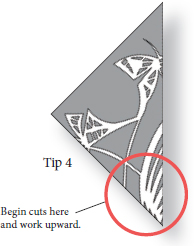
1.

1.
Before folding each sheet, ensure that the colorful, patterned side of the paper starts faceup. This way, the cutting guide on the back of the paper will be visible when the folding is complete. 2. Review the template instructions on before folding any of the sheets. There are folding lines on the backs of the papers for convenience, but using the templates to guide the folds will ensure greater accuracy. 3.
Use light cuts and do not apply too much pressure on the cutting instrument. It may slip and lead to injury. 4. Start cutting from the center area and work upward. 5.  6.
6.  6.
6.
When cutting through many layers of paper, lightly cut through several sheets, then move the sliced layers out of the way, and continue cutting the layers below. 7. When all of the cuts are completed, unfold the paper by simply reversing the folding instructions, starting from the last step and working your way backward. 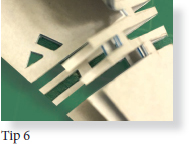
Displaying the Mandalas
Once you have completed the cutting, follow the two simple steps below to proudly display your mandala. 1. 2. 2.
Using clear glue, apply a few drops to the back of the cutting. Then carefully place it onto a large sheet of cardstock or paper. Smooth out the cutting so that it lies flat, and let it dry before displaying. 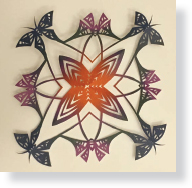
Create Your Own Mandalas
When all of the projects are completed, feel free to create your very own unique mandalas. Simply use the templates provided on , respectively). Once the paper is folded, draw a pattern on the top layer of paper.
Experiment first with very simple patterns. Just a few small shapes, when cut out from several layers of paper, can produce fantastic results! 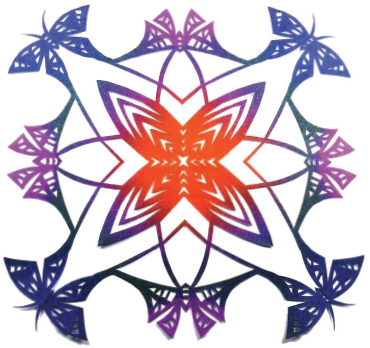
MATERIALS
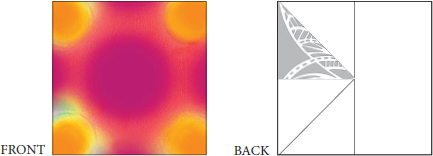
FOLDING INSTRUCTIONS Estimated Time: 2040 minutes
Place the colored side faceup. Orient so that the triangular wedge on the opposite side is in the upper-right corner. Fold the paper in half horizontally.
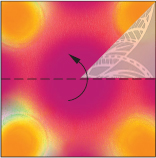
Fold in half vertically.

The folding is complete.

The folding is complete.
The mandala is now ready to be cut.  Using a sharp cutting instrument, carefully cut out the darkened sections of the pattern. When finished, carefully unfold the mandala.
Using a sharp cutting instrument, carefully cut out the darkened sections of the pattern. When finished, carefully unfold the mandala. 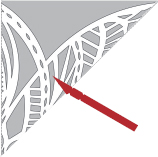

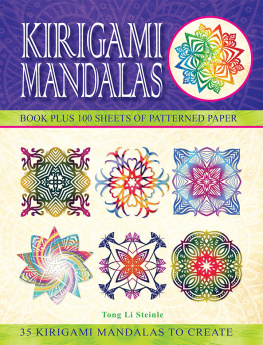




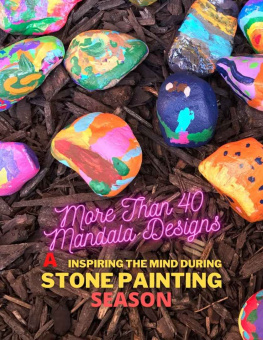
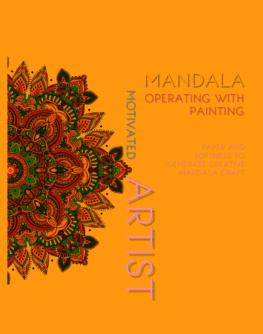

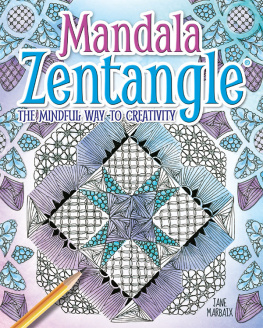
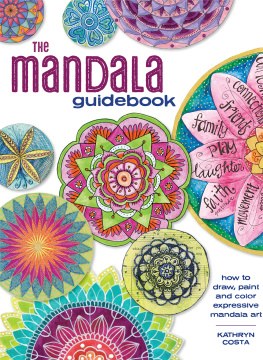




 1.
1.  6.
6. 


 FOLDING INSTRUCTIONS Estimated Time: 2040 minutes
FOLDING INSTRUCTIONS Estimated Time: 2040 minutes Fold in half vertically.
Fold in half vertically.  The folding is complete.
The folding is complete.  Using a sharp cutting instrument, carefully cut out the darkened sections of the pattern. When finished, carefully unfold the mandala.
Using a sharp cutting instrument, carefully cut out the darkened sections of the pattern. When finished, carefully unfold the mandala. 